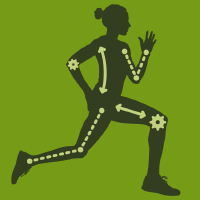Topic Menu
► Topic MenuTopic Editors



2. LAM-Motion Analysis Laboratory, San Sebastiano Hospital, Correggio, Neuromotor and Rehabilitation Department, Azienda USL-IRCCS di Reggio Emilia, Reggio Emilia, Italy
Human Movement Analysis
Topic Information
Dear Colleagues,
Human movement analysis has become very popular in different domains, such as clinical gait analysis, rehabilitation, robotics, sports science, animation and entertainment, video surveillance, and smart houses. The challenge for healthcare professionals, sports biomechanists, and researchers is to study the mechanics of motion and their correlation with various pathologies and/or injuries affecting the musculoskeletal system in less-constrained environments beyond laboratory settings. Recently, there has been great emphasis on the application and development of different sensors and, in particular, wearable sensing technologies that offer exciting opportunities for the continuous monitoring of human kinematics and kinetics in free-living conditions. The aim of this Topic Collection is to present recent findings on the development and application of sensor technologies for measurements of human movement.
In particular, this Topic Collection will report on various sensors, such as video recording sensors, IMU (inertial measurement units) plantar pressure sensors, and electromyography. Authors are encouraged to submit manuscripts for publication in (but not limited to) the following areas:
- Biomechanical sensors in disease assessment, functional diagnosis, treatment, and rehabilitation;
- Sensors for movement analysis for assisted living monitoring;
- Biomechanical sensors in gait analysis;
- Biomechanical sensors in sports;
- Movement analysis through dynamic electromyography;
- Plantar pressure analysis and gaitography;
- Magneto-inertial sensors for human motion tracking;
- Force sensors (strain gauge, piezo, etc.);
- Ultrasound sensors for human movement analysis;
- Goniometers;
- Optical tracking systems;
- Challenges in data processing, simulation, and validation for human movement analysis;
- Challenges in data sensor fusion for human movement analysis;
- Technical challenges in assuring the accuracy and robustness of the provided measures (i.e., sensor placement, measurement drift, repeatability of the provided measures);
- Wireless sensors for human motion tracking;
- Movement analysis and brain activity through mobile assessment (EEG, fNIRS,…)
- Novel applications in the continuous monitoring of human motion in rehabilitation;
- Measuring biomechanics of either the whole body or individual parts of the body.
Dr. Zimi Sawacha
Dr. Giuseppe Vannozzi
Dr. Andrea Merlo
Topic Editors
Keywords
- human motion analysis
- sensors for motion analysis
- clinical gait analysis
- human movement biomechanics
- sport biomechanics
- wearable sensors
Participating Journals
| Journal Name | Impact Factor | CiteScore | Launched Year | First Decision (median) | APC |
|---|---|---|---|---|---|

Applied Sciences
|
2.7 | 4.5 | 2011 | 16.9 Days | CHF 2400 |

Automation
|
- | - | 2020 | 26.3 Days | CHF 1000 |

Biomechanics
|
- | - | 2021 | 23.8 Days | CHF 1000 |

Sensors
|
3.9 | 6.8 | 2001 | 17 Days | CHF 2600 |

Bioengineering
|
4.6 | 4.2 | 2014 | 17.7 Days | CHF 2700 |

MDPI Topics is cooperating with Preprints.org and has built a direct connection between MDPI journals and Preprints.org. Authors are encouraged to enjoy the benefits by posting a preprint at Preprints.org prior to publication:
- Immediately share your ideas ahead of publication and establish your research priority;
- Protect your idea from being stolen with this time-stamped preprint article;
- Enhance the exposure and impact of your research;
- Receive feedback from your peers in advance;
- Have it indexed in Web of Science (Preprint Citation Index), Google Scholar, Crossref, SHARE, PrePubMed, Scilit and Europe PMC.

